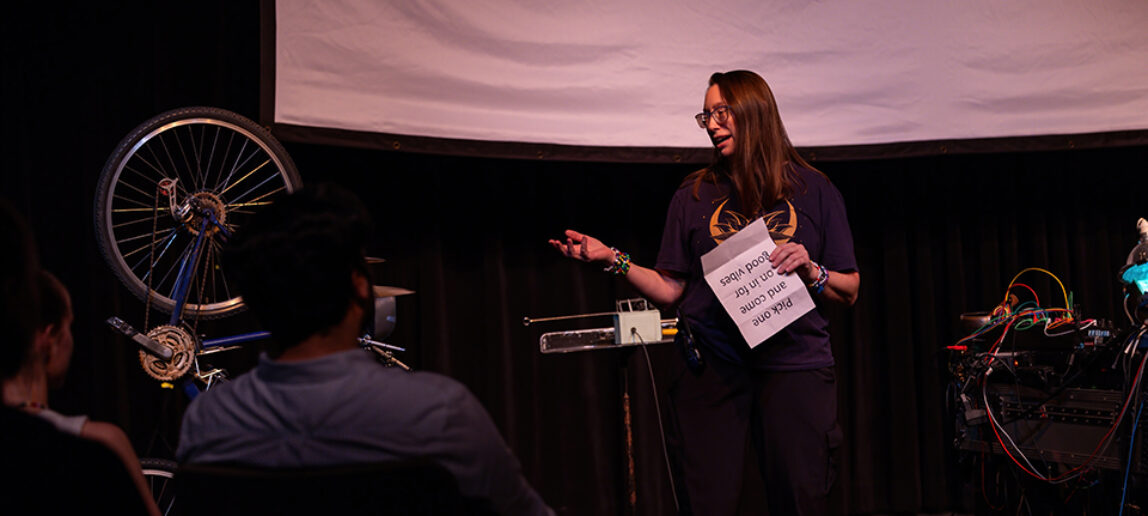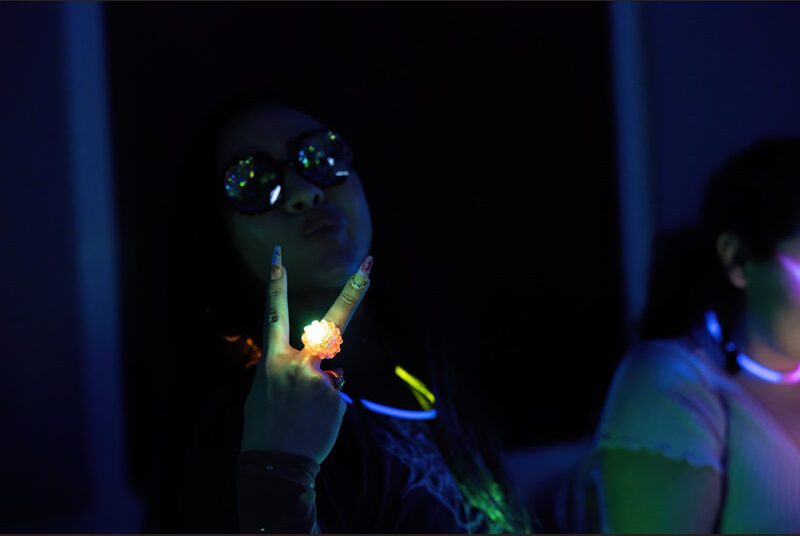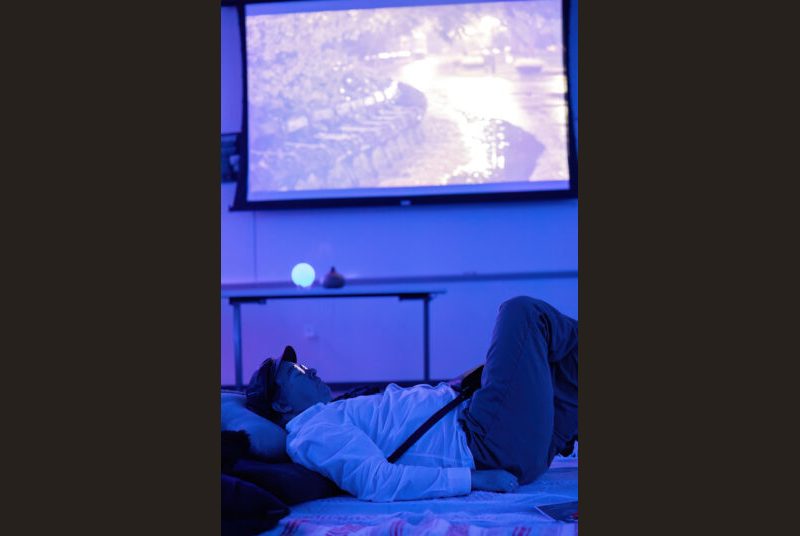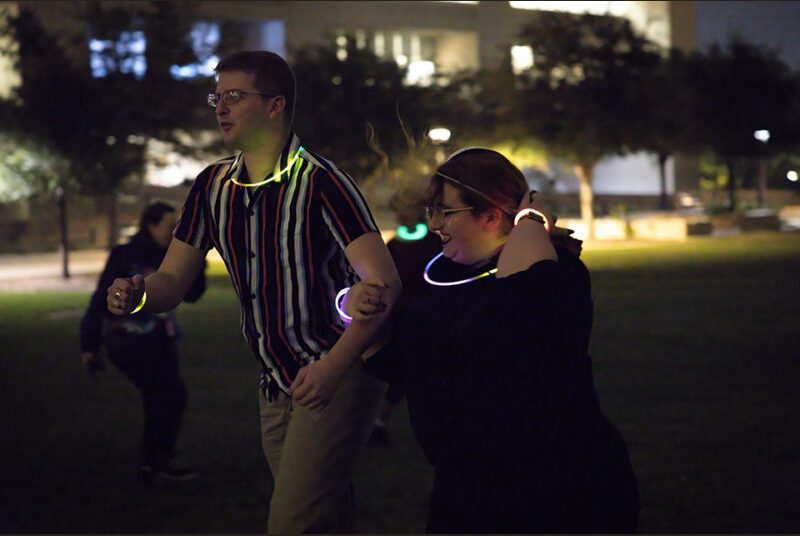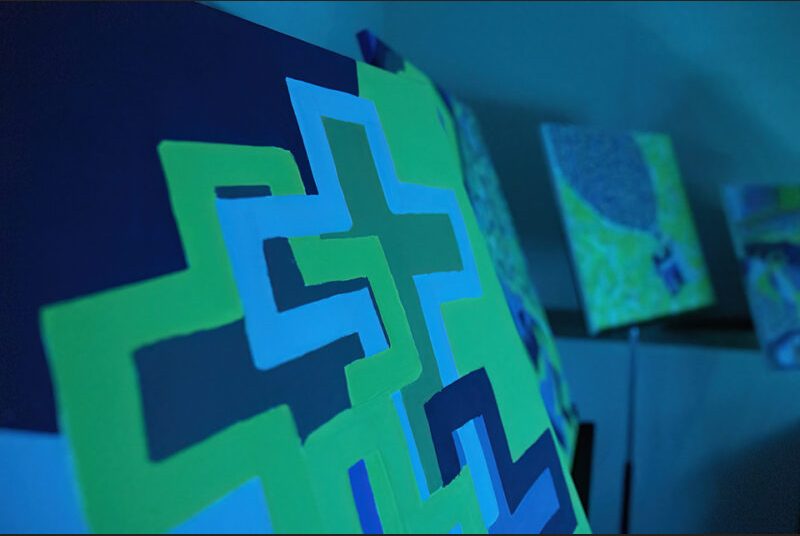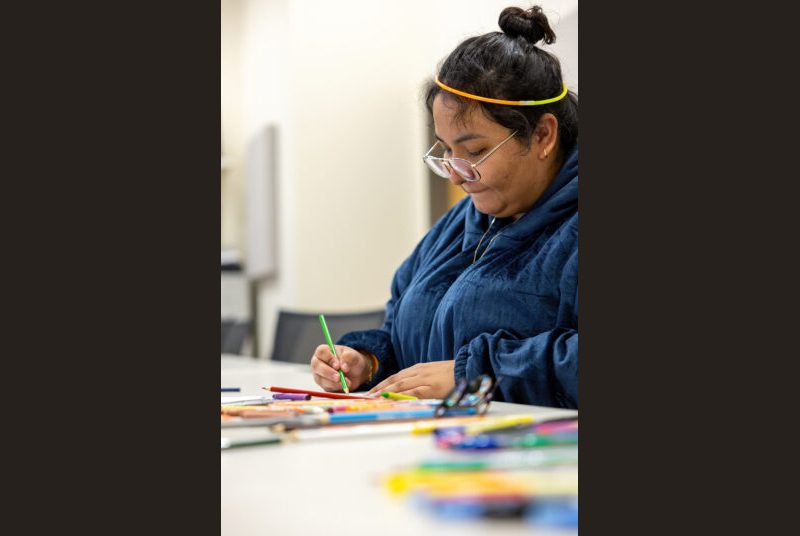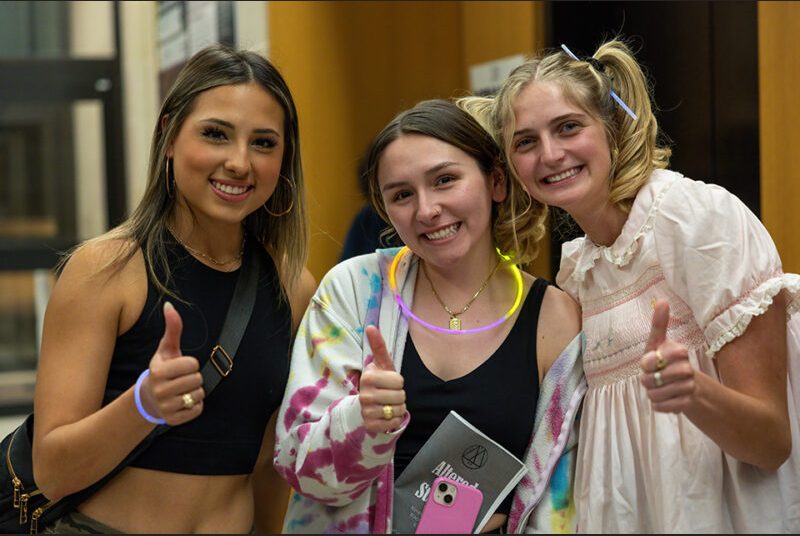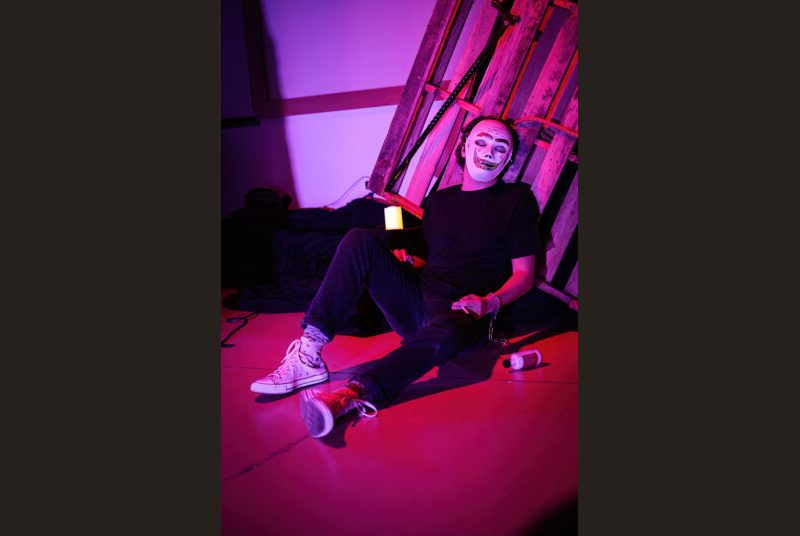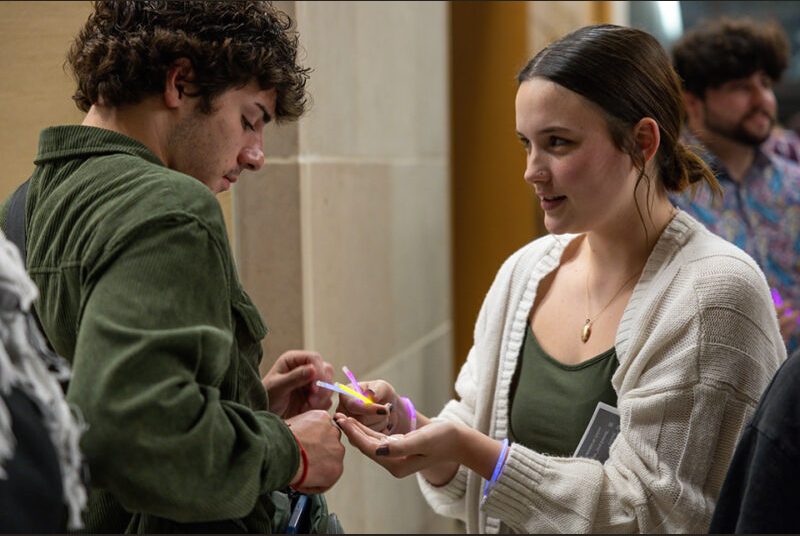Student Creativity, Performances Highlight ‘Altered [Sound]States’ Event
Exploring and tuning into an altered state of consciousness was the focus of “Altered [Sound]States” on Nov. 17 at the Black Box Theater in the Liberal Arts and Arts and Humanities Building (LAAH).
The colorful evening, funded by the Texas A&M School of Performance, Visualization and Fine Arts and Performance Studies program, included music, student performance projects and a guest performance by IOSIS.
Students showcased what they learned in Altered States and Performance Seminar, taught by Dr. Kim Kattari, Performance Studies undergraduate program director, which analyzes the relationship between performance and altered states of consciousness. While psychoactive substances are one means for producing an altered state, Kattari said, her course explores a wide spectrum of altered state experiences, such as those induced by dreams, meditation, dance, music, acting and ritual performance.
The event was inspired by “Burning Man,” which is an exercise in living alternatively, Kattari said. Burning Man is an opportunity for creatives to gather, explore and share art in different ways, as it values radical self-expression, she said.
“Sometimes you don’t get the ‘burn’ you wanted, but the ‘burn’ you needed,” Kattari said after the event. “I research these communities and their performance of utopia. I hope as students are going out into the world, they remember what a utopia can be and feel like, so that they can manifest that in their everyday life. They also learned that performance can be used to understand and change the world, and that altered states can influence and inspire those performances. I hope they take that out into their own creative practices.”
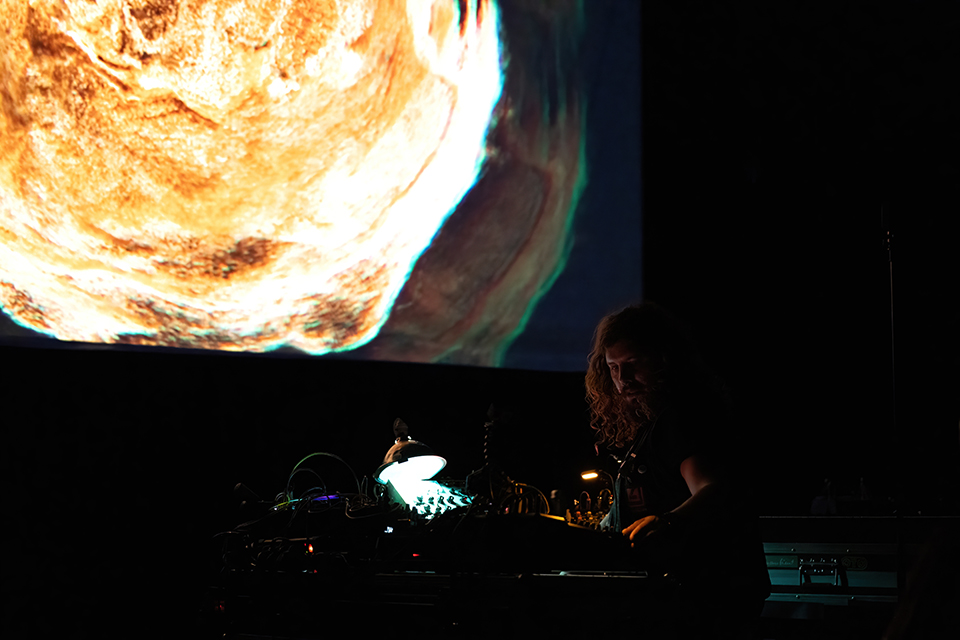
Alex Bissen, a musician, sound designer and composer who performs as IOSIS, performed a 30-minute electroacoustic set of music that is drone-based, meaning it has long and sustained notes and chords, accompanied by visual graphics.
He was later joined by Dr. Will Connor, Performance Studies instructor, and students in Small Ensembles and Electronic Composition classes for an improvisational performance.
IOSIS said he hoped his performances allowed students to enter an altered state of consciousness. He said he appreciated working with students and seeing what they had to offer to the performance piece.
“It seemed like they were able to relax and be without expectation and just be able to let go,” he said. “I was trying to kind of provide a pulse to the performance, and it seemed like they quickly latched onto that, and it was great to work with them.”
After the performances, guests were given glow sticks and invited to run around a simulated fire, which is an expressive practice in the community of Burning Man.
Guests were then invited to wander the first and second floors of LAAH to view projects made in Kattari’s course. Each of the nine student projects reflected the relationship between altered states of consciousness and the arts, she said.
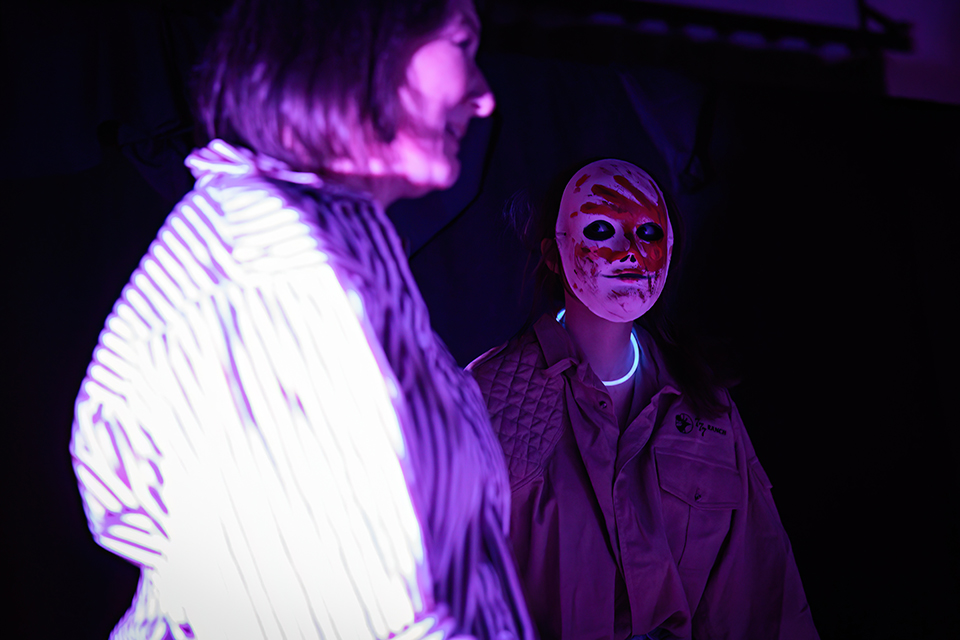
Róisín Alexis, a Performance Studies major, and her group created “Aggie Manor,” a haunted house to evoke an altered state through fear. It featured four students performing as creepy characters that chased guests out of the room.
“When people hear ‘altered states of consciousness’ they automatically think ‘drugs’ right away,” Alexis said. “But it’s not. An altered state can be created by exhaustion, panic, fear. Anything that is different from your normal state is an altered state of consciousness. My group really wanted something to do with fear and the aspect of that, and what better way to do that than with a haunted house.”
Other projects included “Trippy Art Installation,” featuring abstract RGB paintings that changed designs due to colorful blinking LED lights. “Neon Harmony” featured a dance room with flashing lights and upbeat music. There were several stations in the hallways where guests could draw, color, dance or make kandi bracelets.
Desiree Camacho, a Performance Studies major, and her group created “Threaded Meditation,” described as a calming space to evoke a meditative altered state. Upon entry, the room was covered in blue lighting and the sound of calming nature soundscapes. Guests could sit or lay among pillows and blankets.
“Meditation is a form of hypnosis, but it is more to get yourself centered in a way,” Camacho said. “In Dr. Kattari’s class, she talks about the complexities of altered states of consciousness. When you are not in your normal state, you are in an altered state, and you experience all kinds of things, whether that be good, bad, scary or sad. And meditation is a way for you to center yourself and ground yourself so you can become your normal state again.”
Kattari referenced the “PLUR” concept from the Burning Man and electronic dance music communities — meaning peace, love, unity and respect — and said there was an abundance of it at the event.
“At this university we help develop engaged, informed citizens of the world, and PLUR is good for that,” she said. “I think having experienced the PLUR philosophy, students can take PLUR out into the real world, and think about how the performances they make can be grounded in the ethos of PLUR.”
Top photo: Dr. Kim Kattari addresses the audience at “Altered [Sound]States.” Photo by Chris Jarvis, Texas A&M University Division of Marketing and Communications.
